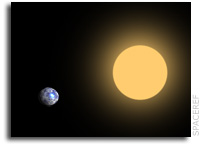Stratosphere Circulation On Tidally Locked ExoEarths

Stratosphere circulation is important to interpret abundances of photo-chemically produced compounds like ozone that we aim to observe to assess habitability of exoplanets.
We thus investigate a tidally locked ExoEarth scenario for TRAPPIST-1b, TRAPPIST-1d, Proxima Centauri~b and GJ 667 C~f with a simplified 3D atmosphere model and for different stratospheric wind breaking assumptions.
These planets are representatives for different circulation regimes for orbital periods: Porb=1−100~days. The circulation of exoplanets with Porb≤ 25~days can be dominated by the standing tropical Rossby wave in the troposphere and also in the stratosphere: It leads to a strong equatorial eastward wind jet and to ‘Anti-Brewer-Dobson’-circulation that confines air masses to the stratospheric equatorial region. Thus, the distribution of photo-chemically produced species and aerosols may be limited to an ‘equatorial transport belt’. In contrast, planets with Porb>25~days, like GJ~667~C~f, exhibit efficient thermally driven circulation in the stratosphere that allows for a day side-wide distribution of air masses.
The influence of the standing tropical Rossby waves on tidally locked ExoEarths with Porb≤25~days can, however, be circumvented with deep stratospheric wind breaking alone – allowing for equator-to-pole transport like on Earth. For planets with 3≤Porb≤6~days, the extratropical Rossby wave acts as an additional safe-guard against the tropical Rossby wave in case of shallow wind breaking. Therefore, TRAPPIST-1d is less prone to have an equatorial transport belt in the stratosphere than Proxima~Centauri~b.
Even our Earth model shows an equatorial wind jet, if stratosphere wind breaking is inefficient.
Ludmila Carone, Rony Keppens, Leen Decin, Thomas Henning
(Submitted on 29 Nov 2017)
Comments: 14 pages, 13 figures
Subjects: Atmospheric and Oceanic Physics (physics.ao-ph); Earth and Planetary Astrophysics (astro-ph.EP); Space Physics (physics.space-ph)
Journal reference: Monthly Notices of the Royal Astronomical Society, Volume 473, Issue 4, 1 February 2018, Pages 4672 – 4685
DOI: 10.1093/mnras/stx2732
Cite as: arXiv:1711.11446 [physics.ao-ph] (or arXiv:1711.11446v1 [physics.ao-ph] for this version)
Submission history
From: Ludmila Carone
[v1] Wed, 29 Nov 2017 15:02:57 GMT (4466kb)
https://arxiv.org/abs/1711.11446








